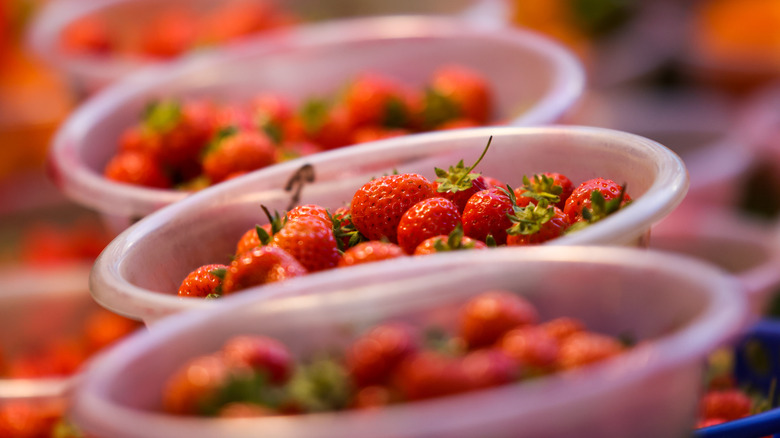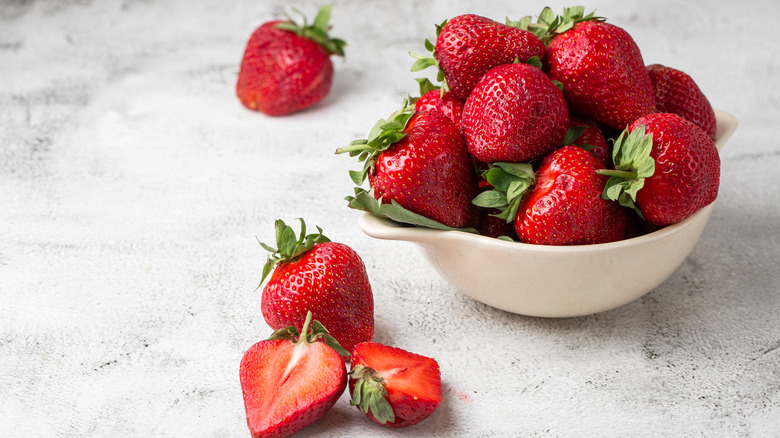Why There's Going To Be A Strawberry Shortage In 2022
Strawberries may become increasingly hard to find during Christmas and into the new year, especially if you live Down Under, according to a recent report by NZ Herald. This hiccup is being attributed to bad weather conditions that have destroyed many crops in New Zealand's Auckland and Waikato regions. These places experienced an immense amount of rainfall that has led to unexpected problems as growers are estimating that they've lost "more than half" of their crops, an especially frustrating experience considering that this is a popular time of the year for the fruit (via News Hub).
According to the FDA, some fresh fruit in the U.S. is sourced from other countries to keep up with demands from customers. A description on the FDA website says, "American consumers seek a safe, diverse, and abundant food supply that is simultaneously affordable and available throughout the year. To help meet these consumer demands, the United States imports about 15% of its overall food supply." However, the current strawberry shortage may not really impact American buyers as a good number of the berries are grown abundantly in states like California, Florida, New York, North Carolina, Oregon, and Washington, according to the USDA.
Bad weather conditions are to blame for the current shortage
According to NZHerald, a combination of humid weather and lots of rainfall has damaged the strawberry crops in certain parts of New Zealand. United Fresh President Jerry Prendergast said in a statement, "All of the strawberries are growing outdoors, they're really struggling with disease issues once that product has actually got waterlogged." He did add that things could potentially look up with another harvest after Christmas, but a shortage is expected during the festive season.
This could potentially lead to higher prices, too. However, Prendergast also offered a positive update and said, "What are we are seeing is [a] new way of growing strawberries now ... there's a lot of growers starting to transition across to undercover crops." He said that these crops remained unaffected and "fruit that was grown under cover is actually coming out in really good condition" (via Newshub) so there may be some hope yet. Meanwhile, Prendergast recommends relying on other fruits for now such as nectarines, raspberries, blueberries, grapes, and cherries.

